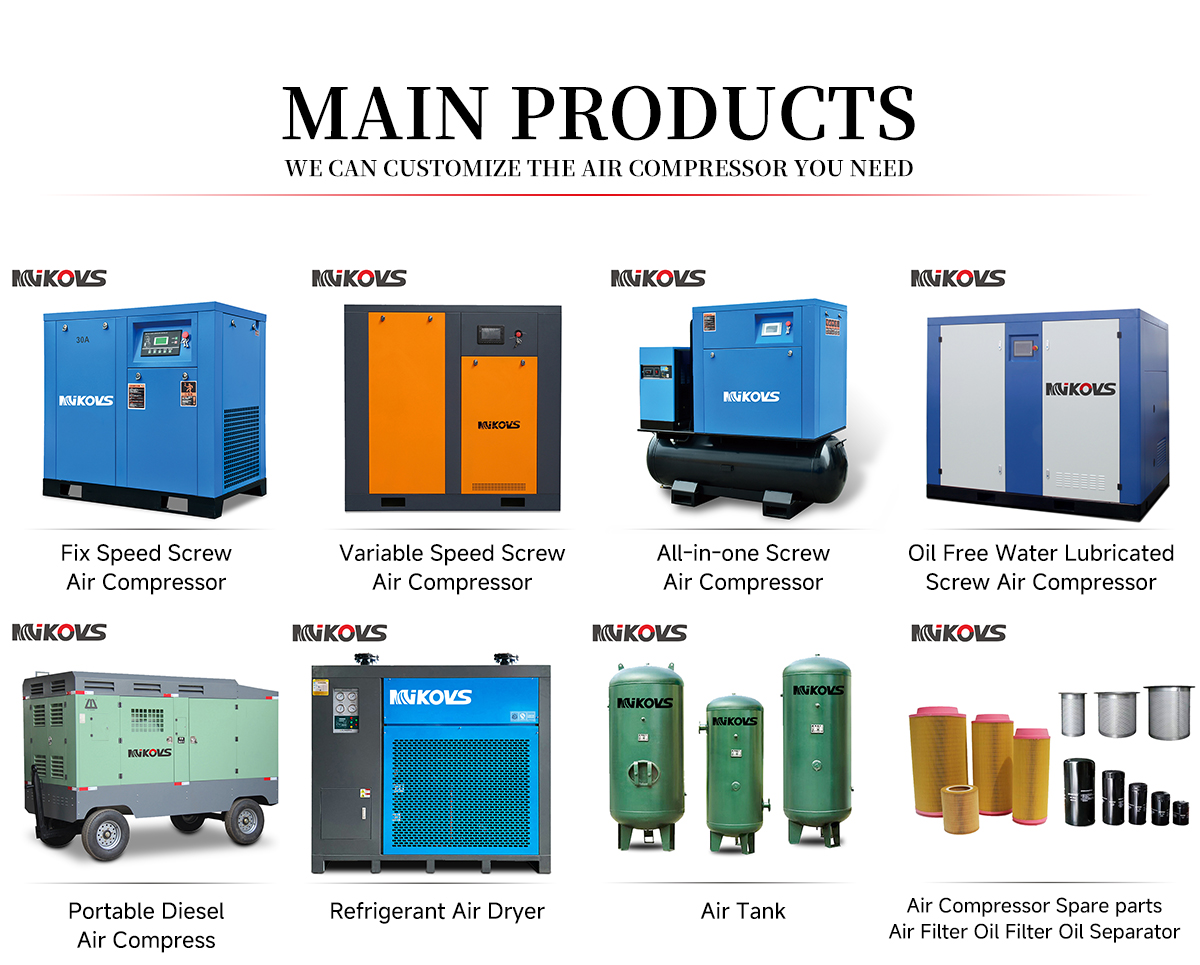Screw Air Compressor: Learn How It Works
Screw air compressors are widely used in various industries due to their efficiency and reliability in providing compressed air for various applications. Understanding how screw air compressors work is crucial to understanding how they work and why they are preferred over other types of compressors.
The working principle of a screw air compressor revolves around the use of two interlocking screw rotors within a chamber. These rotors, often called male and female rotors, are designed to rotate in opposite directions. As the rotor turns, air is drawn into the chamber and trapped between the rotor’s spiral blades. Then, as the rotor continues to spin, the air is compressed, reducing the volume of trapped air and increasing its pressure.
One of the main advantages of screw air compressors is their continuous operation as they can provide a constant flow of compressed air without pulsation. This is achieved through the continuous rotational movement of interlocked rotors, ensuring a stable supply of compressed air for a variety of industrial processes.
The efficiency of a screw air compressor can be attributed to its minimal internal leakage and mechanical losses. The tight gap between the rotor and chamber wall and the precise design of the rotor minimize air leakage during compression. This allows for higher energy efficiency and lower operating costs compared to other types of compressors.
Additionally, screw air compressors are known for their quiet operation, making them suitable for use in noise-sensitive environments. The smooth, balanced rotation of the spiral rotor reduces vibration and noise, helping to create a more comfortable working environment.
Another important aspect of how a screw air compressor works is its oil-injected or oil-free design. In an oil-injected screw compressor, a small amount of oil is injected into the compression chamber to lubricate the rotor, enhance sealing, and dissipate heat. Oil-free screw compressors, on the other hand, use alternative methods, such as specialized coatings or water injection, to achieve lubrication and cooling without the use of oil. This distinction is critical in determining whether a screw air compressor is suitable for a particular application, especially in industries that require oil-free compressed air, such as food and pharmaceutical production.
The modularity and scalability of screw air compressors further enhances their versatility. Multiple screw compressor units can be combined to meet different air demand levels, providing flexibility to expand operations or adjust to fluctuating production needs.
In summary, a screw air compressor works by using interlocking spiral rotors to compress air efficiently and continuously. Their ability to provide a stable supply of compressed air, coupled with high energy efficiency and quiet operation, makes them the first choice for a variety of industrial applications. Understanding how a screw air compressor works is essential to optimizing its performance and selecting the type that best suits your specific operating needs.

